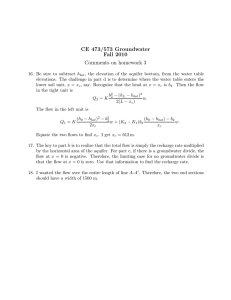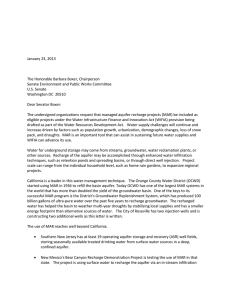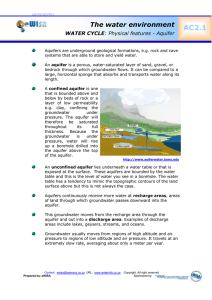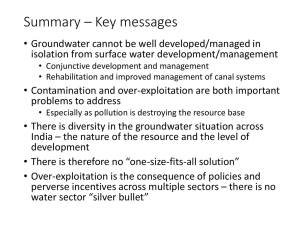CE 473/573 Groundwater Fall 2011 Comments on homework 3
advertisement
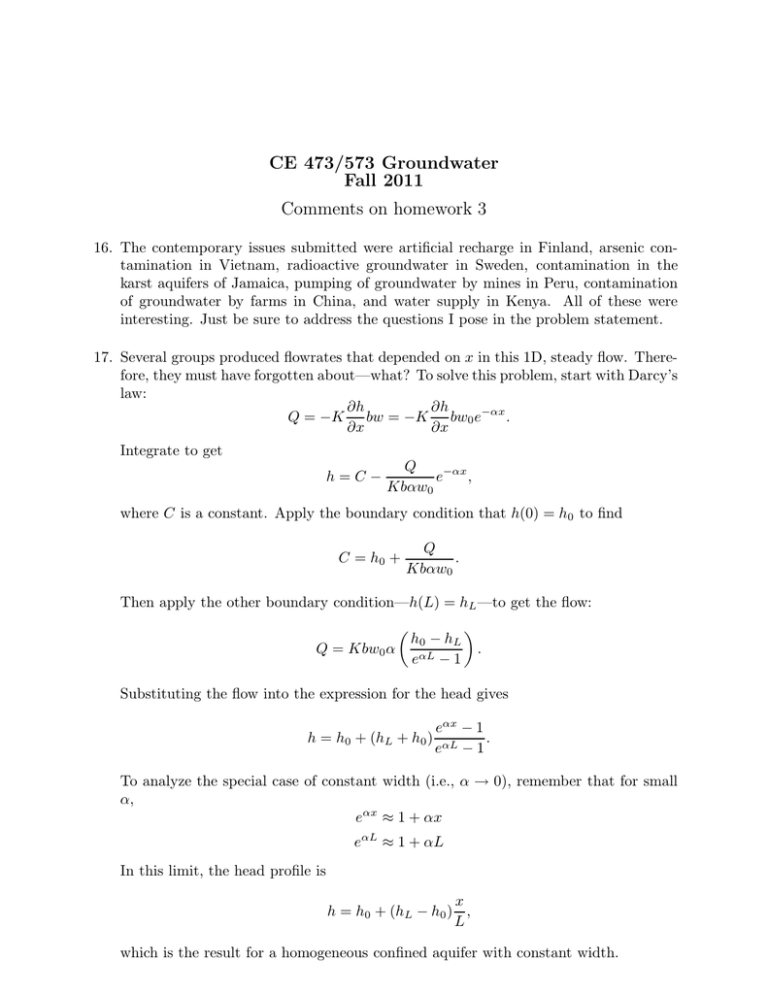
CE 473/573 Groundwater Fall 2011 Comments on homework 3 16. The contemporary issues submitted were artificial recharge in Finland, arsenic contamination in Vietnam, radioactive groundwater in Sweden, contamination in the karst aquifers of Jamaica, pumping of groundwater by mines in Peru, contamination of groundwater by farms in China, and water supply in Kenya. All of these were interesting. Just be sure to address the questions I pose in the problem statement. 17. Several groups produced flowrates that depended on x in this 1D, steady flow. Therefore, they must have forgotten about—what? To solve this problem, start with Darcy’s law: ∂h ∂h Q = −K bw = −K bw0 e−αx . ∂x ∂x Integrate to get h=C− Q e−αx , Kbαw0 where C is a constant. Apply the boundary condition that h(0) = h0 to find C = h0 + Q . Kbαw0 Then apply the other boundary condition—h(L) = hL —to get the flow: Q = Kbw0 α h0 − hL eαL − 1 . Substituting the flow into the expression for the head gives eαx − 1 . h = h0 + (hL + h0 ) αL e −1 To analyze the special case of constant width (i.e., α → 0), remember that for small α, eαx ≈ 1 + αx eαL ≈ 1 + αL In this limit, the head profile is x h = h0 + (hL − h0 ) , L which is the result for a homogeneous confined aquifer with constant width. 19. Most groups omitted the recharge shown in figure 5-1. Because my explanatation of this problem in class also omitted the recharge, I have added one point to the score listed on your homework. Most groups remembered to subtract the elevation of the aquifer bottom from the water table elevations. The main idea in computing the flow is to divide it into several regions and simply add the flows in each reqion. 20. Some groups used the result for a homogeneous unconfined aquifer instead of a layered unconfined aquifer. The result for the latter gives x as a function of h, which poses no problem when one wants a plot of the head profile. 21. The key to part b is to realize that the total flow is simply the recharge rate multiplied by the horizontal area of the aquifer. For part c, if there is a groundwater divide, the flow at x = 0 is negative. Therefore, the limiting case for no groundwater divide is that the flow at x = 0 is zero. Use that information to find the recharge rate.






